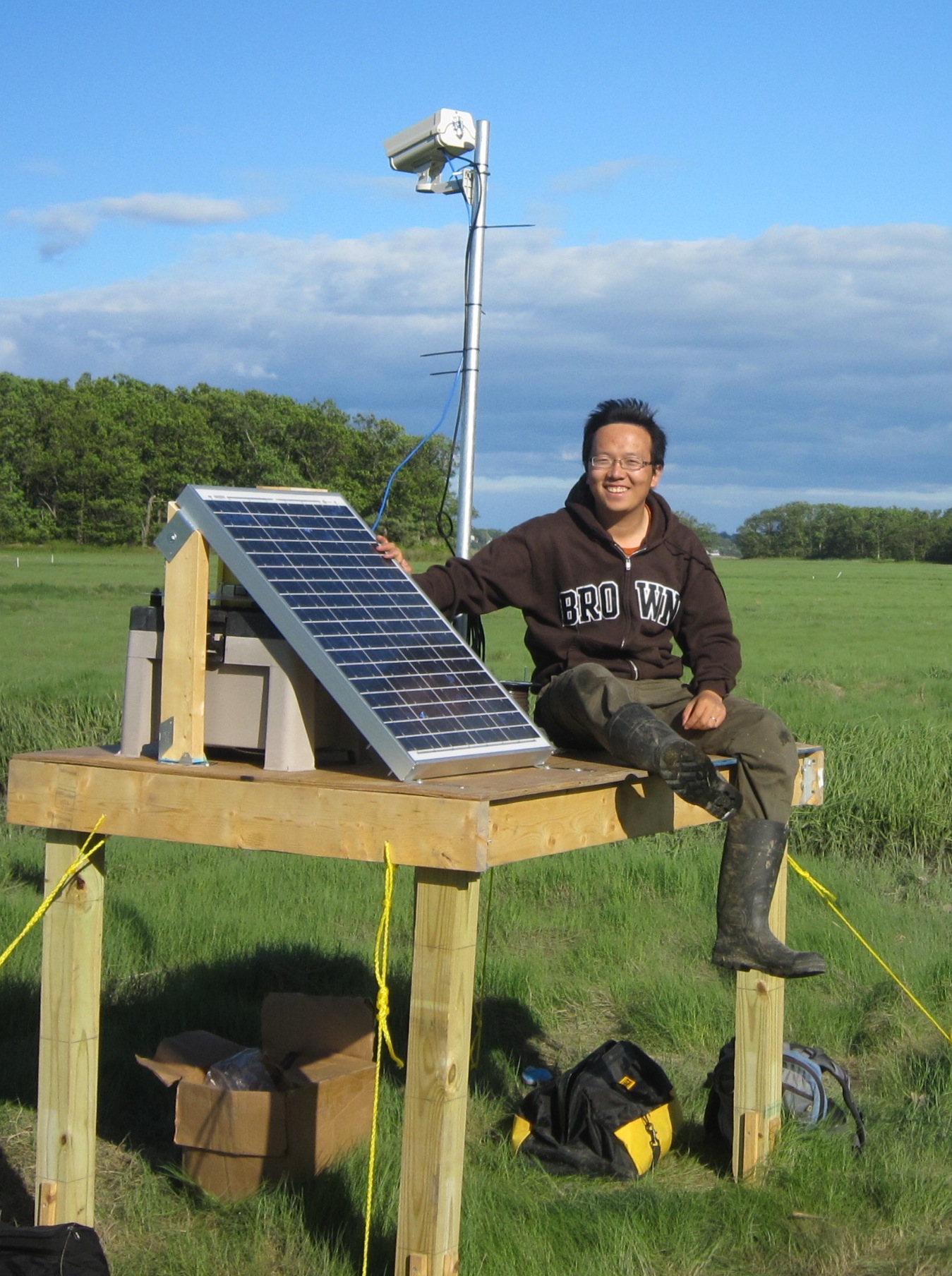Xi Yang Graduates from Brown-MBL Graduate Program; Defends Thesis on Leaf Production and Climate Change

By Emily Skehill and Alison Maksym
Xi Yang successfully defended his Ph.D. dissertation in the Brown-MBL Graduate Program in Biological and Environmental Sciences on April 28 at Brown University. Yang, a former geography and geosciences student from Beijing, began his Ph.D. in the Department of Geological Sciences at Brown in 2009. He was co-advised by Jack Mustard of Brown and Jim Tang, assistant scientist in the MBL Ecosystems Center.
 Xi Yang in the field at the NSF's Long Term Ecological Research Site (LTER) at Plum Island, Massachusetts. This LTER is directed by MBL Senior Scientist Anne Giblin.
Xi Yang in the field at the NSF's Long Term Ecological Research Site (LTER) at Plum Island, Massachusetts. This LTER is directed by MBL Senior Scientist Anne Giblin.Yang studied how climate change affects the timing of vegetation producing and shedding leaves in temperate deciduous forests. Using a remote sensing technique, he observed the change of leaf colors throughout the seasons and assessed how this is linked with leaf physiology. Recently, Yang developed a system to continuously monitor solar-induced fluorescence, which is an indicator of plant photosynthesis, throughout the seasons in Harvard Forest in Petersham, Mass.
Remote sensing studies such as Yang's can map changes in key processes that affect our ecosystems, such as photosynthesis and timber production. Mechanistic understanding of how climate controls these processes will help us to assess how our ecosystems are responding to the changing climate.
In June, Yang will start work as a postdoctoral scientist with Jung-Eun Lee at Brown University and Joe Berry at the Carnegie Institute for Science. He will be using fluorescence to understand the response of tropical ecosystems to water stress.
Yang's thesis was titled, "The Times They Are A-Changin’: Scaling Seasonality of Plant Physiology from Leaf to Satellite and Implications for Terrestrial Carbon Cycle." More information on his thesis research is here. Yang published the following articles during his doctoral work:
Yang X, Tang J and Mustard J (2014). Beyond leaf color: comparing camera-based phenological metrics with leaf biochemical, biophysical and spectral properties throughout the growing season of a temperate deciduous forest. J. Geophysical Research-Biogeosciences, DOI:10.1002/2013JG002460.
Yang, X., Mustard J, Tang J and Xu H (2012). Regional-scale phenology modeling based on meteorological records and remote sensing observations. J. Geophysical Research-Biogeosciences 117(G3), G03029.